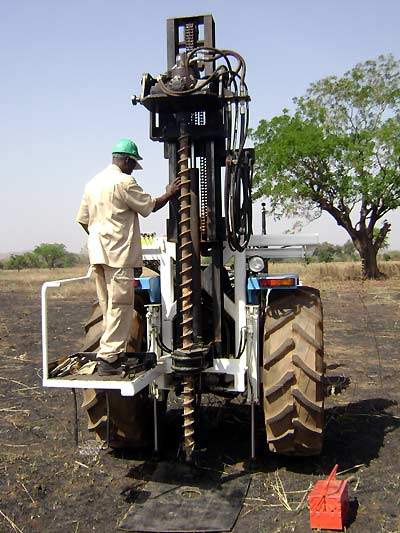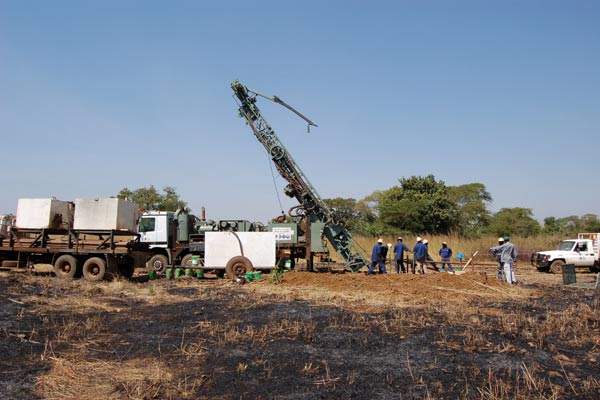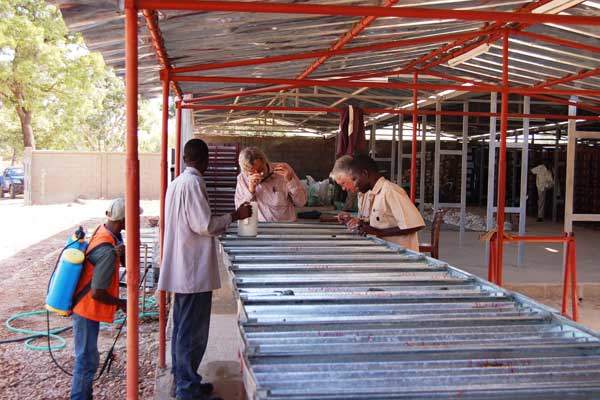The Gaoua project, covering an area of around 691.5km², is located at Southern Burkina Faso. The project area lies within the Boromo greenstone belt. The belt is an early Proterozoic Birimian sequence of the West African Craton.
The project comprises the Malba, Souhouera and Danyoro permits. These permits host various copper and gold prospects and are about 70km apart in the north-east of the Kampti permit and are 100% owned by the Gaoua Project.
The project area includes a 35km-long anomalous porphyry trend. The Dienenera and Gongondy deposits are also located in same trend. The deposits outcrop approximately 7km apart and demonstrate similar distinctive geophysical features. The same signs along the copper-gold corridor indicate significant existence for additional deposits covered between Gongondy and Dienemera, and within a greater 35km strike area. There is a potential to extend the current resources and enhance the overall potential of the Gaoua Copper-Gold project.
Through geological mapping and soil geochemical surveys conducted during 2007, the company identified various copper and gold anomalies in the 8km area delineating Gongondy and Dienemera/Mont Biri, increasing the area’s potential.
Stream sediment sampling was carried out across the southern part of Souhouera and Danyoro properties.
Volta Resources and Freeport-McMoRan Exploration Corporation (FMEC) entered into a definitive agreement in January 2009, under which FMEC would earn interest up 70% in the Malba, Souhouera and Danyoro permits by funding the projects, based on a feasibility study. However, FMEC announced it will not proceed with exploration expenditures and payments. Therefore, FMEC could not earn interest in the project and has no rights to the Gaoua project.
Volta Resources announced, in April 2009 that 30 copper gold porphyry targets have been determined from a 3-D inversion exercise and high resolution magnetic data obtained from copper-gold porphyry.
Trenching at Dienemera and Mt Biri was completed in July 2009. The trenching was done to identify and verify soil anomalies. Trenching has been in progress as of September 2009.
Expansion
The company declared gold assay results from soil sampling and a scout trenching programme held over new the Nassara prospect in September 2009. Trenching identified a mineralised interval of 44m at 1.82 g/t gold along with 20.5m at 3.65 g/t gold.
The Nassara prospect is located in the south-western corner of the Danyoro permit, one of the deposit permits of Gaoua project. Nassara was identified in the process of regional geological mapping and soil geochemical surveys conducted earlier. The presence of gold in a soil anomaly along with north-west striking airbrone magnetic lineament was identified in a recent in-fill soil geochemical survey.
The results confirm the prospectivity for the southern portion of Boromo Greenstone Belt, including Gaoua copper gold porphyry deposits such as Gongondy, Dienemera and Mont Biri.
Geology and reserves
The principal geological unit strikes north-south. The project’s geology is mainly concentrated with basaltic and andesitic rocks along with volcanoclastic units and chemical sedimentary rocks such as chert and quartzite. These units are intruded by diorite and dioritic breccia units.
The central structural corridors at the Malba and Souhouera permits host the main copper-gold and gold occurrences. The prospects identified include Gongondy, Dienemera and Mt. Biri and contain mineralisation hosted in several phases of the dioritic intrusive units.
The hydrothermal cement is formed of quartz, K-feldspar, epidote, chalcopyrite, pyrite, calcite and anhydrite.
The company announced an inferred resource estimate for Dienemera and Gongondy deposits in the Gaoua copper-gold porphyry project in February 2009. The resource were estimated by SRK Consulting by diamond drilling 26,661m in 92 holes and 1,305m in 15 reverse circulation holes.
The project has inferred resources of 82,600,000t grading at 0.40% copper and 0.40 g/t gold for a total 724,880,000lbs of copper and 1,072,900oz of gold. The cut off grade rate is 0.45% copper.
Mineralisation
The mineralisation at three of drilled prospects is attributed with hydrothermal breccia, largely hosted by diorite porphyry intrusions. The mineralised breccia is featured with small clasts and the presence of centimetric clots of cementing minerals that approximate a triangular form. The copper-gold mineralisation is limited to the dioritic porphyry dominated area. The mineralisation hosting breccia consists of hypogene chalcopyrite resulting in the appearance of gold values.
Cu-Au mineralisation at the Gongondy permit has been intersected for more than 2km of strike length. The mineralisation is defined by reverse circulation and diamond drilling in J-shape around the gabbro in the southern block.
At the Dienemera permit, drilling has intersected Cu-Au mineralisation across the tested area. Drilling will be required to test that mineralisation is continuously hosted by large body or set of contiguous breccia bodies.
Four diamond holes have been drilled at Mt Biri. Drilling at Mt Biri is at early stage, so the potential size of mineralised body to be developed with further drilling is difficult to identify.
Drilling
The Auger Drilling programme between the Dienemera and Gongondy deposits was initiated to identify potential copper gold porphyry targets covered by regolith material, such as a heterogeneous material covering solid rock.
The RC drilling programme was planned by the company to expand the mineralisation identified to the west of the post-mineral Gabbro intrusive at Gongondy.
The drilling programme is classified into two phases. Phase 1 includes planned drilling of 85 holes at Gongondy West and south of Gongondy along five traverses placed 400 and 500m apart. Holes will be drilled every 50m along the traverses ranging between 300 and 900m. Given the depth of cover, the average depth of the holes is expected to be around 7m, extending over a strike length of 1.75km.
Further, under phase one, 233 holes have been planned between Gongondy and Dienemera along seven traverses that are located 700 and 1,200m apart. The holes will be drilled every 50m along the traverses ranging between 750 and 2,000m. This will result in the addition of 7,200m of strike length.
Under phase 2, a provision for around additional 400 holes for infill drilling over more narrow traverses has been made. The drilling will be in the areas with initial lines intersecting mineralisation between Gongondy and Dienemera.
More than 23,000m of drilling has been completed in last two years on the projects two main deposits Gongondy and Dienemera deposits. The recent drilling results in February 2009 indicated more significant copper gold intercepts.
New Resolution Geophysics of South Africa conducted a magnetic and radiometric survey in 2008.. A 3-D inversion exercise of newly acquired airborne magnetic data to determine fingerprint of copper gold porphyry mineralisation was concluded by the geophysical consultant in April 2009.
With 3-D inversion software, a FastMag3D visualisation Techbase Block Model was created to examine patterns related to contacts, structures and intrusive rocks associated with porphyry deposits.
Additional trenching has been planned to test anomaly at other positions within the 4km gold anomaly defined. The anomaly will be extended by infill soil sampling.






